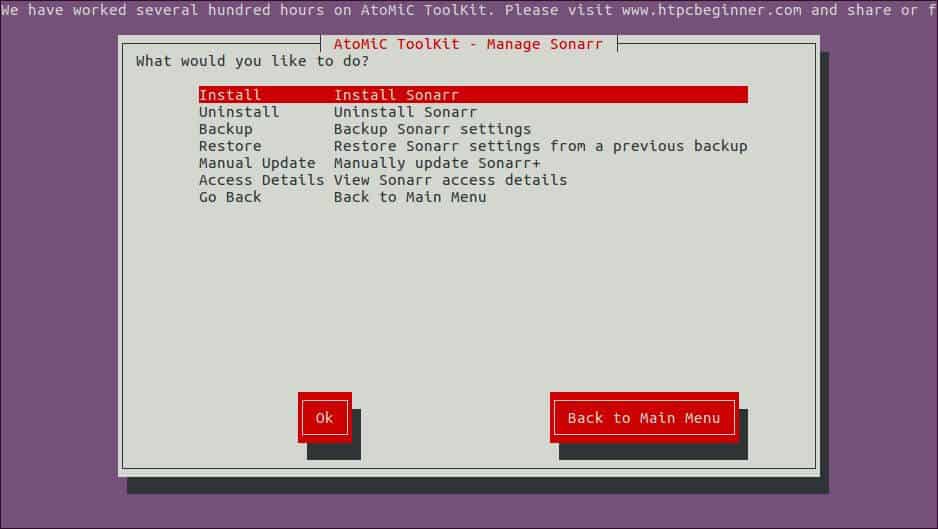

- INSTALL SONARR VIA TERMINAL HOW TO
- INSTALL SONARR VIA TERMINAL UPDATE
- INSTALL SONARR VIA TERMINAL FULL
(If so, maybe I could post another question.) devmapper and NLS are disabled since former isn't directly used, latter isn't supported on Android.Ĭan I use fdisk on a linux system or on Cynwin on a windows system? Knowing that fdisk brought by BusyBox can't handle GPT. Building with Bionic libc on NDK (to make it fully Android-ish) needs a lot of changes in source code because function calls (libc) and also some syscalls (kernel) differ on Android and Linux. I have compiled these on ArchLinuxARM (running on my Redmi Note 4) and on Ubuntu (PC) using gcc (cross-)compiler with glibc and they work great. You may get parted static binary for aarch64 (ARM-v8) and armel (ARM-v5) architecture from this link.

Using a static binary is the best option to avoid complications of dynamic linker/loader, libc etc. Android doesn't want you play with its partition table. There is no official way, so parted isn't part of AOSP.
INSTALL SONARR VIA TERMINAL HOW TO
How to "install" the parted command into my android smartphone? Not tested on MTK or other chipsets (paths may differ) or the devices with raw NAND/MTD memory.

Note: This is applicable to Qualcomm SoC with eMMC (block device accessible through FTL).
INSTALL SONARR VIA TERMINAL UPDATE
If you try to run it on any of these operating systems or others please leave it in the comment box to update clcR.CONSIDERATION: Also in that script (clcR) class limpiar It's called cleanup and the parameter rObject defined for your method, corresponds to cleanupObject.
INSTALL SONARR VIA TERMINAL FULL
"H" because it reminds me of "Home" or "Home" on the web pages.Now if you want something dynamic for the code to recognize whether we are in R.app or RStudio, R has a function commandArgsFor the case macOS the default folder of the application is: "/Library/Frameworks/R.framework/Resources/bin/exec/R"The full implementation is here on my github: NOTE: The script clcR shared has not been tested in: Linux, Windows, Ubuntu. This function will not only clean the respective terminal will also place the cursor at the top left of the same as most terminals support the being"\033": Esc"[2J": Delete the entire screen"[1 1H" or "[H": column 1 and row 1 of the screen, although I prefer How the code above worksWhen you write something previously defined in R (a variable in this case), R interprets that you want to print - in this case clc was initially defined as a class of the "numeric" type, could also be a "matrix"-Then create the method for the class "clean" as print.limpiar()Then any object -function, variable, etc.- that comes from the class that is the "clean" type - the only one there is clc- at the time of printing will not print anything, but will execute cat("\014")Therefore, once you run the three lines above, you just have to writeclcĪnd the R console will be clean.If we are in the terminals RStudio and macOS the third line (print.limpiar <- function(rObject) cat("\014")) should be changed as follows:print.limpiar <- function(rObject) cat(c("\033[2J","\033[H")) Print.limpiar <- function(rObject) cat("\014") There's a way that clc clean the R console if we do the following:clc <- 0


 0 kommentar(er)
0 kommentar(er)
